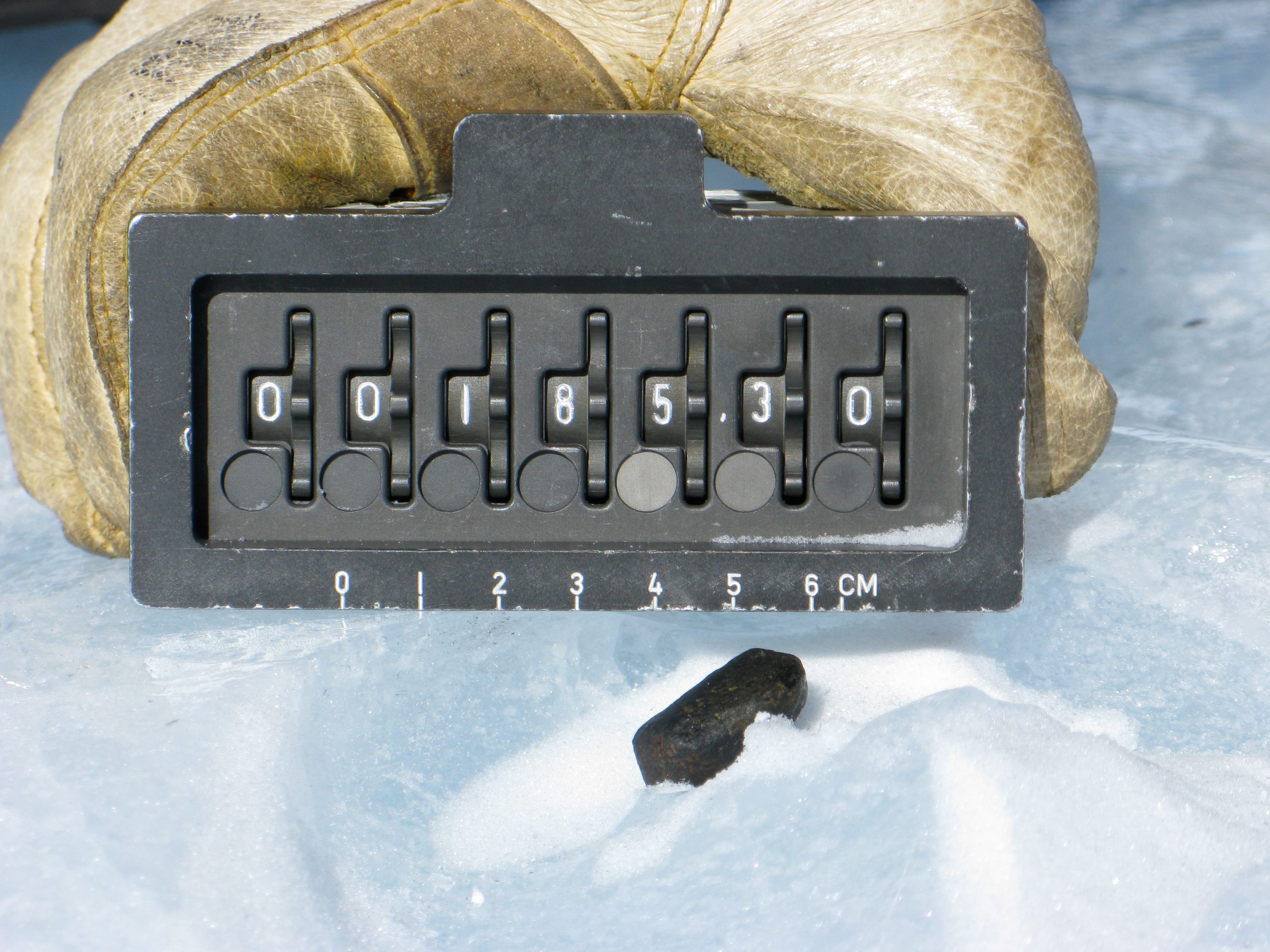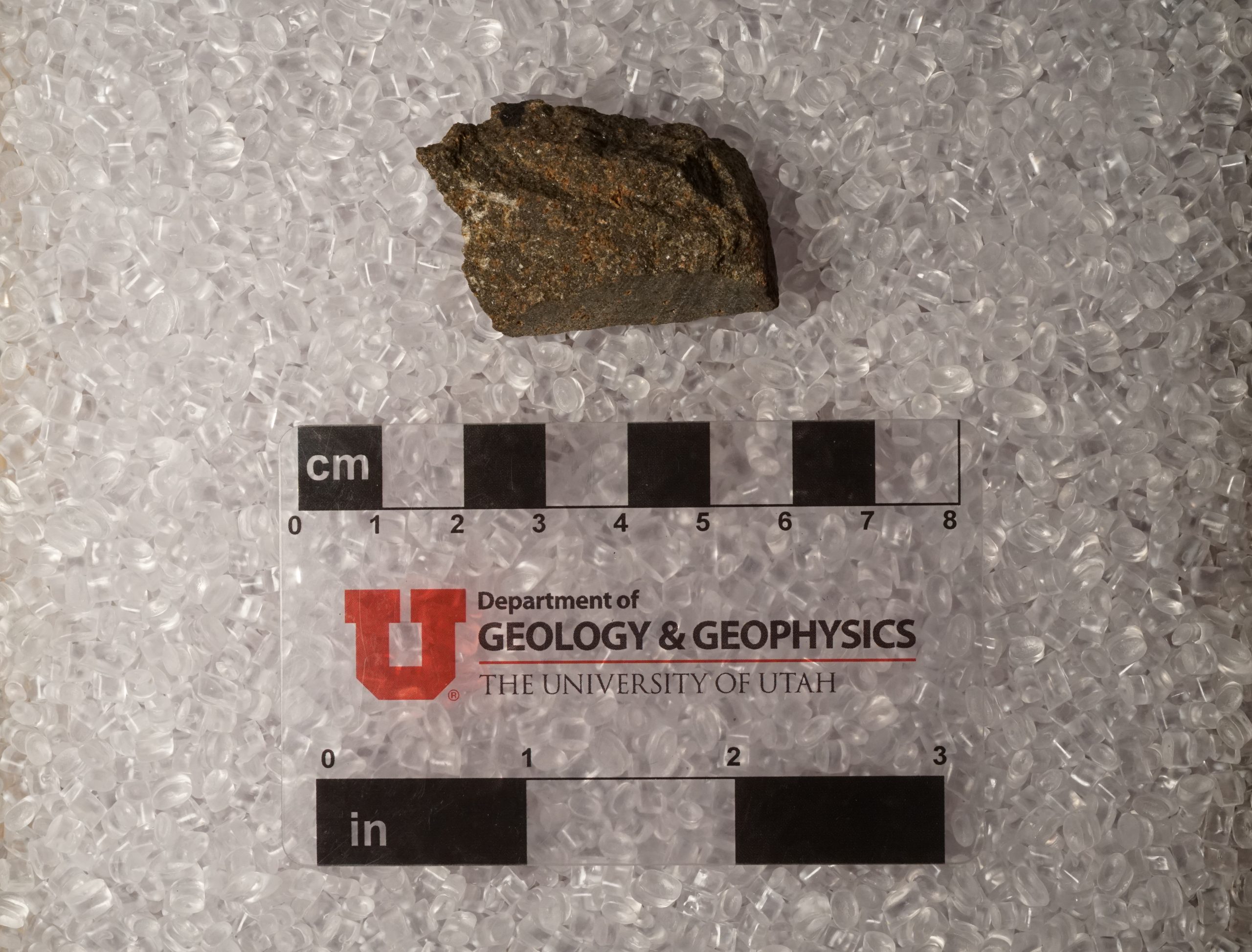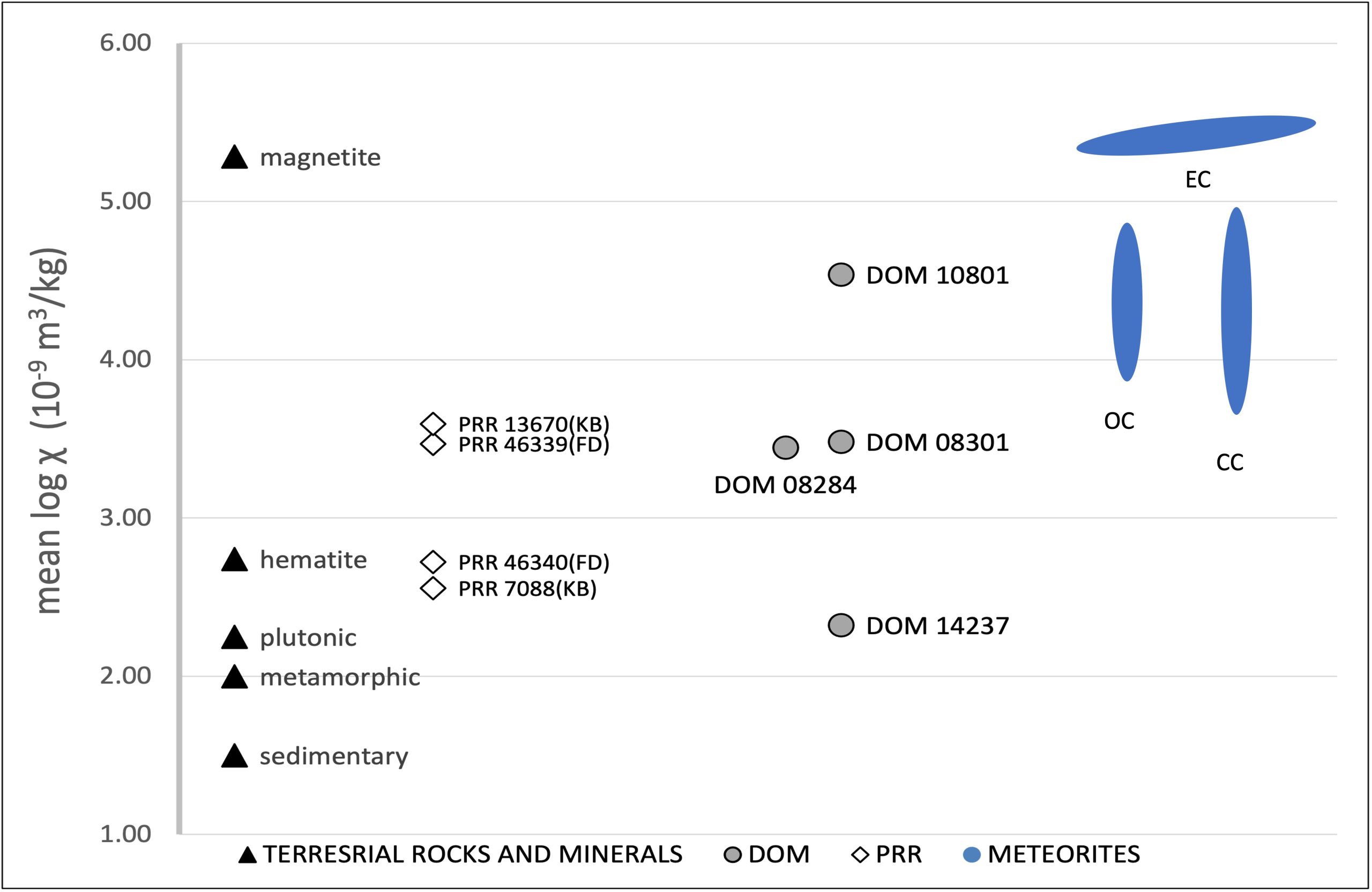College of Mines and Earth Sciences
100 Preliminary Identification of Terrestrial Rock Samples (i.e., Meteor-Wrongs) Recovered by the Antarctic Search for Meteorites (ANSMET) at the Dominion Range Ice Fields, Antarctica
Melanie Gomez and James Karner
Faculty Mentor: James Karner (Geology & Geophysics)
Introduction
Out of more than three thousand meteorites that ANSMET has recovered at theDominion Range (DOM), only 16 were terrestrial instead of expected meteorites [1]. Themethod the ANSMET team uses during meteorite recovery is entirely based on visual characteristics of meteorites [2]; such as dark color, spherical or equant shape, rounding on all/most corners, fusion crust, and possibly a shiny/oily luster. After each expedition, all recovered specimens are sent to NASA’s Johnson Space Center and the Smithsonian for initial characterization, and each season a few samples are identified as terrestrial (i.e., meteor-wrongs). However, no additional information or identification on the meteor-wrongs is provided, and the mineral composition/rock types of meteor-wrongs remain unknown. Since the co-author is ANSMET’s primary investigator, the identification of the meteor-wrongs is of particular interest- what exactly are the terrestrial rocks or minerals that are commonly mistaken for meteorites in Antarctica?

Figure 1: Field photograph of meteor-wrong DOM 08284 [1]
We have begun the examination of the physical, optical, and chemical properties of five meteor-wrongs that have been recovered from DOM. By examining these properties our goal is to determine the identity (mineral/rock) of these meteor-wrongs.
Samples and analytical techniques
We examined both hand specimens and thin sections DOM meteor- wrongs and compared them with Antarctic igneous rocks (hand samples and thin sections) provided by the US Polar Rock Repository (PRR). The meteor-wrongs include DOM 08301, DOM 14237, DOM 08284, DOM 10165, and DOM 10801. The Antarctic rocks used for comparison were: PRR 46340, PRR46339, PRR7090, PRR13670, and PRR7088, which are all samples of Kirkpatrick Basalts (KB) or Ferrar Dolerites (FD). FD is one of the prominent rocks found in East Antarctica and like a meteorite, it can be round or spherical. Fresh samples exhibit a gray color and have a coarse-grained interior, but with weathering the rock becomes a dark reddish-brown [3]. KB is also a common Antarctic rock and is darker in color (more black than gray or brown) than FD, and more fine-grained [4].
Physical properties of the samples were observed using a variety of techniques. We examined the surface textures of the Antarctic terrestrial rocks using a Zeiss Stemi 305 Stereo Microscope (Figure 2). The density of the DOM hand samples was measured using a jolly balance and the magnetic susceptibility (MS) was determined using a KT-20 Magnetic Susceptibility and Conductivity Meter. We also measured the MS of the PRR hand samples and the minerals magnetite and hematite for comparison.

Figure 2: Digital photograph of PRR 13670, Kirkpatrick Basalt
A Leitz Laborlux 12 petrographic microscope equipped with plane polarized, crossed polarized, and reflected light was used to analyze the mineralogy and petrology of thin sections of both DOM and PRR samples. A tablet camera, mounted onto the microscope, was used to capture images of specific areas of interest within the thin sections.
DOM thin sections were further examined using a Cameca SX 100 electron microprobe. Wavelength Dispersive Spectroscopy was performed using a voltage of 15 kV, a beam current of 20 nA, and a beam size of 10 μm. We used known silicate minerals and metals as standards. Thus far, we have started analyzing samples DOM 14237 and DOM 08301 on the electron probe.
Results and discussion
A direct correlation was seen between density and magnetic susceptibility measurements. The samples with higher MS readings, also had a greater density measurement. All five of the terrestrial PRR samples (igneous rocks) had a density of approximately ~2.96 g/cm3. For comparison, we also note that hematite and magnetite both had a density of 5.1 g/cm3 and sedimentary rocks typically range around 2.3 g/cm3. Carbonaceous chondrites (CC), ordinary chondrites (OC), and enstatite chondrites (EC) have densities of 3.0 g/cm3, 3.3 g/cm3, and 3.61 g/cm3 respectively [5]. Our DOM meteor-wrongs had relatively low densities ranging from 2.6 g/cm3 – 2.7 g/cm3, more similar to the igneous PRR samples than meteorites. However, DOM 08284 had a higher density of 3.69 g/cm3, making it more similar to the density of magnetite.
The use of MS was used as to aid in the identification of the minerals inside the meteor-wrongs. MS measures the magnetic potential of iron in a rock, thus the more magnetic the rock, the more iron is present in the metallic state. This method has been successfully used to discriminate between Antarctic terrestrial rocks and various meteorite classes [5]. Figure 3 shows MS measurements of the PRR samples, DOM meteor- wrongs, and select meteorite classes. From these plots, we can see that DOM 08284 and DOM 08301 had similar MS values to PRR13670 (KB) and PRR46339 (FD). This would be logical, as when examined in thin section, both DOM samples contained few iron-oxides and displayed characteristics consistent with igneous rocks. DOM 10801 had a similar measurement to the ordinary and carbonaceous chondrites, which correlates with its rich iron-oxide content seen in thin section. DOM 14237 lacked iron-oxides in thin section, explaining its low MS value.

Figure 3: MS measurements of PRR samples and meteor- wrongs. Meteorite and terrestrial rocks and mineral ranges are taken from [5].
Light microscopy was used to study the optical properties of our unknowns and compare them to our the PRR samples and also a thin section of the Great Salt Lake Meteorite (H5). Both DOM 08284 and DOM 08301 were composed of fine-grained silicates (quartz and feldspar), contained very few oxides, had a grain size of about 10 μm. DOM 10165 had larger silicate grains that measured approximately 150 μm and was abundant in smaller oxide grains. DOM 14237 consisted mostly of quartz and some white and brown grains that measured about 20 μm. Lastly, DOM 10801 was composed of mostly opaque grains in plane light, and in reflected light look to be a mix of hematite and magnetite. Additionally, all DOM samples contained oxides, even if only in trace amounts. The Antarctic PRR samples exhibited massive pyroxene and feldspar grains in igneous cumulate rock textures that measured around 100μm-700μm, with the exception of PRR 46340 which had a grain size around 20μm. The Ant- arctic samples also had a higher range of interference colors indicating pyroxene, has more euhedral grains, and had fewer opaques than our DOM samples. The Great Salt Lake Meteorite looked very different than our DOM samples in that it exhibited angular to subangular grains of highly birefringent pyroxene and olivine, clusters of iron-nickel metal and sulfides, and several decently defined chondrules.
Once again, only DOM 14237 and DOM 08301 have started being analyzed using the electron microprobe. Both samples were composed of anhedral grains of quartz and feldspar with euhedral iron oxides. DOM 142370 was 70% quartz, 20% feldspar, 5% oxides, and 5% alteration minerals (i.e., clays?). DOM 08301 was ~75% quartz, 10% feldspar, 10% oxides, and 5% alteration minerals.
Conclusions
Thus far, we can conclude that most of the DOM samples are neither KB or FD due to their high quartz and feldspar compositions and lack of Fe, Mg silicates. Furthermore, DOM 10801 is a mixture of iron-oxide minerals, probably magnetite and hematite. We continue to analyze the remaining DOM samples and the results will be updated as soon as possible.
Acknowledgments
I, Melanie Gomez, would like to express my gratitude to Dr. Karner for letting me participate in this research project. His support and patience have inspired and motivated me throughout my academic research. Additionally, this work was supported by funding from the Undergraduate Research Opportunity Program at UU awarded to M.V. Gomez and NASA grant 80NSSC23K1520 to J.M. Karner. Comparative samples were provided by PRR which is supported by the NSF under award OPP-2137467.
Reference
[1] US Ant. Met. Coll. Class. DB (2023), https://curator.jsc.nasa.gov/antmet/classdb.cfm [2] Harvey, R. (2003) Chem. Erde, 63, 93-147. [3] Harvey, R. (2001) JGR, 90, 25. [4] Faure, G., et 169 (1974) Contrib. Mineral. Petrol., 48, 153-169. [5] Folco, L., et al. (2006) MAPS, 3, 343-353.

